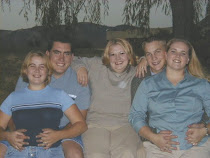hot tips on thrift store shopping
taken from
1. Do: Go Often
“The key really is to go often because thrift stores are set up to turn over inventory fast,” Turosak says. Her advice is to design a “thrifting routine” that involves perusing your favorite secondhand shops every three days or so. “Put it into your daily rounds,” she says. “If you grocery shop near a thrift store, then go in quickly to see what’s new.”
2. Don’t: Spend Hours Browsing Every Time
Turosak says the only time you should be spending hours in a thrift store is your very first day there. Take that first day to familiarize yourself with the layout of the store, and pretty soon you’ll be able to waltz down the aisles with the greatest of ease, nabbing $5 cashmere sweaters and $10 party dresses in mere minutes.
3. Do: Get Familiar with Sale Days and Discount Offers
Most thrift stores—especially the big ones such as Goodwill and The Salvation Army—have regular sales. For example, items with certain tags may be 50% off on Saturdays. Many stores also offer additional price breaks for seniors. If you don’t see a sign, ask one of the store’s employees.
4. Don’t: Buy Things You Don’t Need
Just because you’re surrounded by $4 price tags doesn’t mean that you should throw anything and everything into your cart. “I have passed up gorgeous clothes because I just didn’t need them,” Turosak says. She also suggests checking care tags on clothing to calculate whether dry cleaning costs will be worth the initial bargain.
5. Do: Use a Shopping Cart Every Time
Even if you only plan on buying a few things, having a cart helps you keep track of items and claim them as your own. It’s also a great way to keep your hands free while bargain hunting. Plus, before checking out, you can review all the items in your cart to make sure you’re spending within your budget.
6. Don’t: Be a Cheater
“Grabs from bins are okay, but grabbing from [someone else’s] cart, no matter how full, is not playing fair,” Turosak writes. Consider how you would feel if someone swiped a sweet find from your cart—which is why Turosak firmly believes in the thrift store karma of what goes around, comes around.
7. Do: Keep an Open Mind
The secondhand shopping experience is nothing like going to a department store, so don’t expect cushy seating, fancy dressing rooms or a pleasant soundtrack. What you get in exchange is bargains that can’t be beat, and, as Turosak points out, “you don’t have pushy salespeople” to deal with. That said, remember that items are pre-owned, so carefully look over everything, especially clothing, before you buy it. There is nothing worse than getting home and finding a permanent stain on an otherwise gorgeous pair of pants.
8. Don’t: Make a List
“If you have a list, that will just constrict your thought process,” Turosak says. Instead, try walking into a thrift store with an idea of what you want, but with your eyes open for other great bargains too. For example, Turosak was making the rounds one day when she spotted a Pottery Barn sofa sleeper for only $250. “I wasn’t looking for a sofa sleeper right then, but I had wanted one for years.”
9. Do: Shop the Charity Stores
There are all kinds of thrift shops, from consignment boutiques to mammoth-size Salvation Army stores, but Turosak loves the nonprofit ones best. “I know they’re going to do good things with the money,” she says.
10. Do: Beeline for the Hot Spots
One of the best places to score quality clothes in a secondhand shop is a newly stocked rack (watch for stockers to push them out; once they’re on the sales floor you can start sorting). Also check out the areas near the dressing rooms, where people tend to discard great items that didn’t fit them.






Tuesday, April 14, 2009 4:41:00 PM
Great tips. I always want to shop the thrift stores, but I get so frustrated and leave without anything of quality.
Tuesday, April 14, 2009 5:17:00 PM
Great tips Grammee!! Thanks for sharing!!
Tuesday, April 14, 2009 5:40:00 PM
Good post !
I have a very picky son who I never in a million years thought would buy items at a thrift shop but he came to show me and brag about the stuff he bought for his wife, son, daughter and himself for about 7 dollars...he is now a believer and my frugal ways are finally rubbing off ! Yeah !